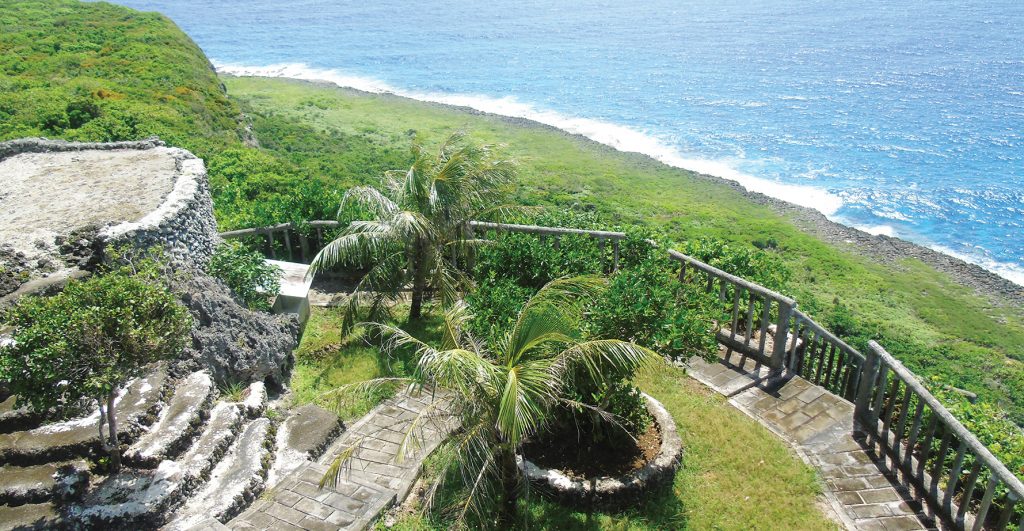Rota suitable for inclusion in national park system
Kilili says NPS findings post-COVID-19 is economic opportunity for Marianas
The National Park Service issued yesterday its preliminary findings that indicate Rota is a special place with significant cultural and natural resources.
NPS said based on preliminary results of its special resource study, Chamorro archeological sites, World War II Japanese defensive sites, and limestone forests appear to be nationally significant and suitable for inclusion in the national park system.
With this development, Delegate Gregorio Kilili C. Sablan said (Ind-MP) yesterday that NPS findings that a Rota National Historic Park is “both suitable and feasible” is a post-COVID-19 economic opportunity for the Marianas.
“This is good news at a time when the economic future of the Marianas is uncertain,” Sablan said.
He, however, stated that as the NPS’ draft report indicates, a national park is only feasible with the partnership of the CNMI government, the Rota municipal government, and, especially, public agreement “that this is the right step to take.”
“Now, we need to hear from the people of Rota and the people of the Marianas: What do the people want to do? That is next question to answer,” Sablan said.
NPS’ special resource study of Rota was authorized by Congress in 2014, after four years of work by Sablan. In 2015, Sablan secured funding, prompting NPS to begin the study.

The Rota Bird Sanctuary is being eyed as part of a planned Rota National Historic Park. (CONTRIBUTED PHOTO)
NPS said yesterday that its preliminary analysis also indicates that these sites would be conditionally feasible for inclusion in the NPS, requiring a partnership based approach for management because of land ownership restrictions on Rota.
Based on these preliminary findings, NPS staff developed three alternative concepts for the preservation and public enjoyment of these sites including: Continuation of current management; Rota National Historical Park Concept; and Rota National Monument or Preserve Concept.
Sablan said NPS’ study proposes three alternative courses of action for a public discussion that will formally begin in September 2020 with virtual meetings and opportunities for written comments.
Sablan said the first alternative is to continue the current management by the Commonwealth and Rota municipal government agencies.
He said the second and third alternatives are for the CNMI and the Rota municipal governments to enter into a management agreement with NPS for a Chamorro National Historical Park (about 526 hectares), or for a Chamorro, limestone forest, and WWII sites National Historic Park (about 1,780 hectares).
Sablan said all lands would remain in Commonwealth ownership consistent with Article 12.
Sablan said currently, there are only 57 National Historic Parks nationwide and that these include Abraham Lincoln’s birthplace, Valley Forge, and the Appomattox Court House, where the Civil War ended.
After the public makes its views known, NPS will send a final report to the Secretary of the Interior, who will in turn transmit a recommendation to Congress. Only Congress can actually create a national park.
Sablan said a Rota National Park is an idea that started on Rota, when former senator Diego Songao suggested it to him, when he (Sablan) was first elected in 2009 as delegate.
Sablan said he immediately pushed a bill authorizing a resource study through the U.S. House of Representatives.
The U.S. Senate was less interested on the idea, but Sablan persisted as in his second term in 2012, he again introduced and passed a bill in the House, and then again in his third term in 2013.
Both bills received a hearing before the Senate Energy and Natural Resources Committee.
Sablan was able to piggyback his legislation on the National Defense Authorization Act of 2015, P.L. 113-291.
Sablan got the study funded in the Fiscal Year 2016 Consolidated Appropriations Act, P.L. 114-113.
At the House hearing in 2010, then-Rota representative Teresita A. Santos during her testimony showed that Natural Resources Committee slides of Mochon Latte Stone Village, Chugai Pictorial Cave, and the Taga Latte Stone Quarry.
After Santos’ presentation, Rep. Grace Napolitano (D-California) called Rota “a jewel.”
Sablan said overall, residents who attended public hearings and/or provided comments viewed a unit of the national park system on Rota as beneficial and supported NPS management and programming of the nationally significant sites.
Sablan said the study also noted public concerns about limits on traditional hunting, collecting, and agricultural practices.
“We know what happens when the government takes action—like approving the Imperial Pacific casino—that do not have the support of the people or disrespect our culture,” he said.
The delegate encouraged everyone to take a look at the NPS report and provide input.
He said Rota has the kind of unique and beautiful sites that people from around the world would come to see—a permanent source of economic activity in the future that would be based on the Chamorro heritage that stretches back 3,000 years.























